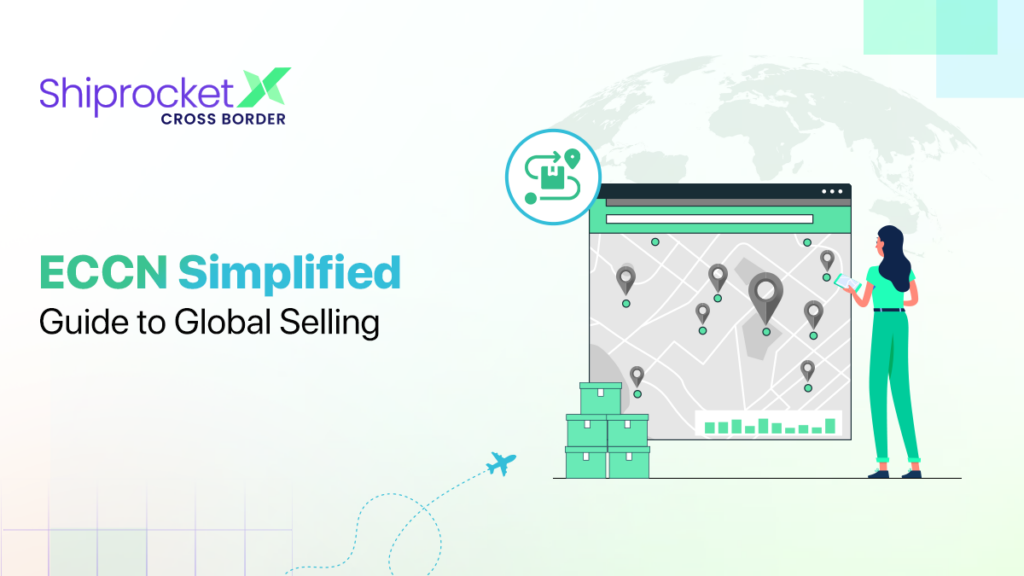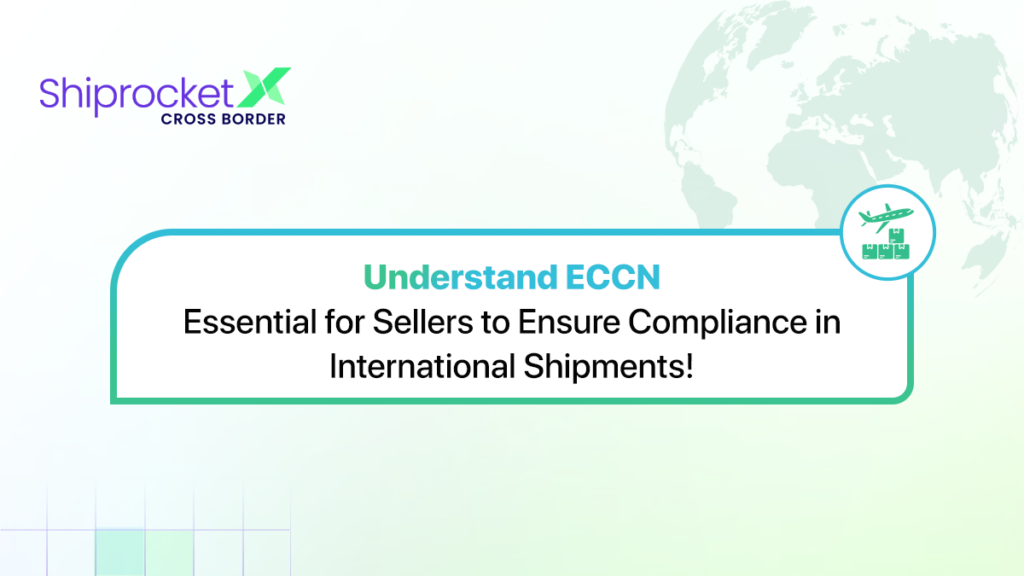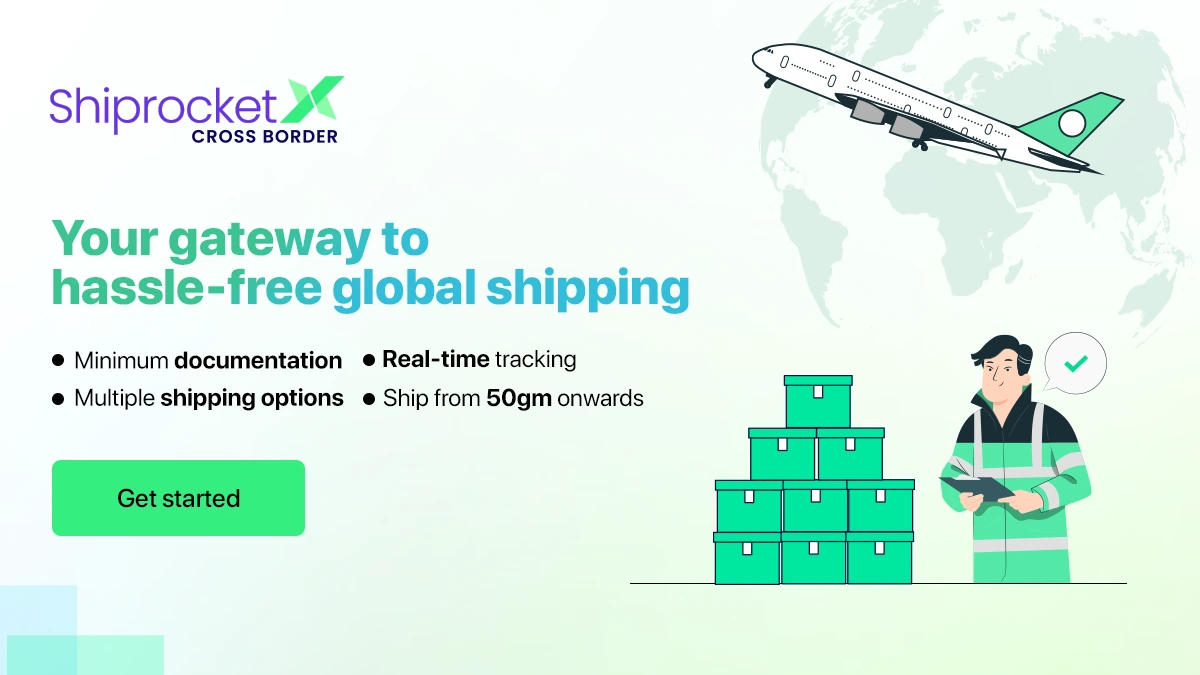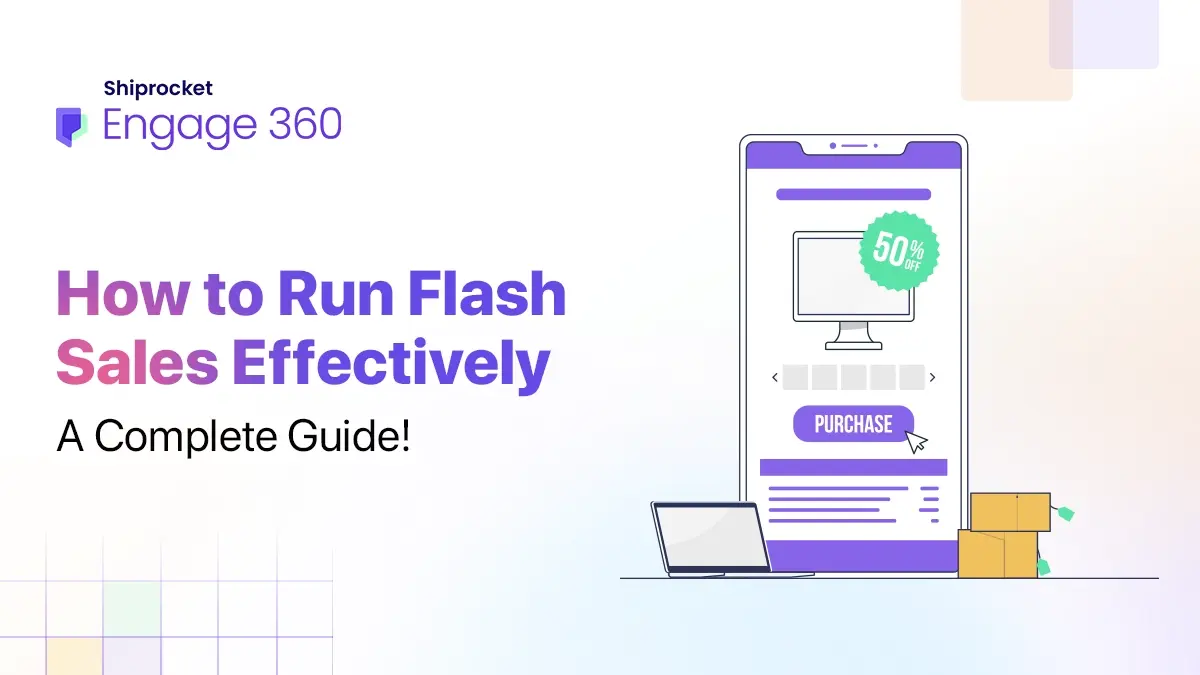What Is ECCN? Export Rules You Need to Know
- What is an Export Control Classification Number (ECCN)?
- The Format of an ECCN
- Importance of ECCN for Sellers
- How to Determine the ECCN for Your Products?
- How to Apply for an ECCN?
- Common Misconceptions about ECCN
- Expand Your Business Globally with ShiprocketX: Simplifying International Shipping!
- Conclusion
Expanding your business internationally can open doors to incredible opportunities, but it also comes with trade rules and regulations. The Export Control Classification Number (ECCN) plays a crucial role in streamlining global trade. It’s a term every seller dealing with international markets needs to understand to ensure smooth operations and compliance with export laws. Knowing what ECCN means and why it matters can make all the difference in your success as an international seller.

What is an Export Control Classification Number (ECCN)?
An Export Control Classification Number (ECCN) is a five-character alphanumeric code used to classify items based on their type, technology and technical attributes. It is part of the Commerce Control List (CCL) introduced by the U.S. Department of Commerce to identify items needing special control before being exported from one country to another.
The ECCN system helps exporters determine if they need an export licence. Most products are classified under EAR99, meaning a special export licence isn’t usually required. However, some goods, such as chemicals, electronics, and computers, are listed on the CCL and may need export licensing.
The Format of an ECCN
The five-character alphanumeric code’s first digit represents the product category in the Commerce Control List (CCL). There are 10 categories in total.
- 0 – Nuclear materials, facilities, and equipment (and miscellaneous items)
- 1 – Materials, chemicals, microorganisms, and toxins
- 2 – Materials processing
- 3 – Electronics
- 4 – Computers
- 5 – Telecommunications and information security
- 6 – Sensors and lasers
- 7 – Navigation and avionics
- 8 – Marine
- 9 – Propulsion systems, space vehicles, and related equipment.
The second character is a letter indicating the product group. There are five product groups.
- A – Systems, equipment, and components
- B – Test, inspection, and production equipment
- C – Material
- D – Software
- E – Technology
The last three characters represent the reasons for licensing control on that product.
Importance of ECCN for Sellers

Here’s why ECCN is essential for sellers:
- Regulatory Compliance: Knowing the correct ECCN for your product helps determine if you need an export licence. This is important because following export control rules keeps you away from legal issues, fines, or penalties.
- National Security: ECCNs protect national security by stopping the shipment of sensitive technologies or products to unauthorised countries or people. As a seller, knowing your product’s ECCN helps you ensure you’re not sending anything that could cause security concerns or fall into the wrong hands.
- Trade Efficiency: Knowing a product’s ECCN makes the export process much easier and faster. It tells you exactly what documents and procedures are needed to avoid delays and keep your shipments moving smoothly.
- Risk Mitigation: Correctly classifying your product with an ECCN helps you spot any potential risks with exporting. It gives you the necessary information to take the proper steps, like getting an export licence or avoiding specific destinations. This way, you can prevent mistakes that might hurt your business, like accidentally violating export rules.
- Transparency and Accountability: Accurately reporting your ECCN shows that you take the rules seriously. It also shows your commitment to ethical trade and transparency in your business. This builds trust with customers and partners and helps you stay in good standing with authorities.
How to Determine the ECCN for Your Products?
Here’s how you can determine the ECCN for your products:
- Contact the Manufacturer:
Your product’s manufacturer might already have an assigned ECCN for it. However, this code can change over time due to regulation updates. It’s crucial to confirm that the ECCN is still valid and up-to-date. Sometimes, manufacturers may not always have the most current information, so it’s a good idea to double-check the classification, especially if you’re planning to export frequently.
- Self-Classification:
If you have a solid technical understanding of the product and are familiar with the Commerce Control List (CCL), you can try self-classifying the product. You’ll need to identify your product’s category within the list and its corresponding product group. Then, compare the product’s features, functions, and specifications with the detailed ECCNs listed in the CCL.
- Request ECCN from BIS (Bureau of Industry and Security):
Another option is to formally request an ECCN directly from the Bureau of Industry and Security (BIS), responsible for classifying export-controlled items. For this, you must have a Company Identification Number (CIN) and submit your request through the BIS online system known as the Electronic Request for Item Classification (ERIC). While this process can be slower, it’s an official and reliable way to ensure that your products are classified correctly for export.
- Seek Professional Help:
You can seek the help of experts or consulting firms specialising in export control regulations and ECCN classification. They can guide you through the process, ensuring that your product is classified correctly and complies with all relevant laws and regulations.
How to Apply for an ECCN?
Follow these straightforward steps to apply for an Export Control Classification Number (ECCN):
- Understand What Needs an ECCN: First, determine whether your product falls under U.S. export control regulations. Not all items need an ECCN; only products with sensitive technology or military use are classified under these rules.
- Check the Commerce Control List (CCL): You’ll need to review CCL to identify the correct category of your product.
- Apply to the Bureau of Industry and Security (BIS): First, you must register with BIS online. Once registered, you can submit your request for an ECCN through the Simplified Network Application Process Redesign (SNAP-R). The application will ask for details about the item, including its technical specifications, intended use, and destination countries.
- Wait for the BIS Review: Once you’ve submitted your application, BIS will review it. This may take several weeks, depending on the complexity of the product. If they need more information, they may contact you for clarification.
- Receive Your ECCN: After the review, if your product requires an ECCN, you will be issued one. If BIS determines your item does not require the code, they will state that it is non-controlled.
Common Misconceptions about ECCN
Here are the common misconceptions about ECCN:
- “Commercial off-the-shelf” items are not controlled: Products widely available for purchase can be subject to export controls, depending on their use or the technology involved.
- Minimal quantities are exempted from licence: Any amount of a controlled item, no matter how small, may require an export licence. The quantity doesn’t exempt it from regulations.
- Research projects are always exempted: While research might not be controlled, the equipment or software used could be subject to export controls.
- Items carried in personal luggage are exempted from regulations: If an item leaves the country, it is considered an export, even in personal luggage. It still needs to be assessed for export control regulations.
- “EAR99” mean “not controlled”: Items labelled EAR99 are not on the Commerce Control List, but depending on their destination or use, they can still require an export licence in certain situations.
Expand Your Business Globally with ShiprocketX: Simplifying International Shipping!
Looking to take your business global? ShiprocketX makes international shipping simple and hassle-free. You can easily send products to over 220 global destinations with no weight restrictions. The platform handles everything, from transparent billing to quick customs clearance—so you can focus on growing your business. Choose from various delivery speeds, including urgent shipments in just 4 days. You’ll also get real-time updates, a branded tracking page, and a comprehensive dashboard to track your shipments. With dedicated support, shipment security, and easy returns management, ShiprocketX makes global shipping easier. Sign up and start expanding today!
Conclusion
Understanding ECCN is crucial in ensuring your international selling process is smooth and compliant. It helps you confidently navigate export regulations, protecting your business from potential risks and delays. By taking the time to familiarise yourself with ECCN and its requirements, you set your business up for success in the global market. As you grow and expand, staying informed about such key regulations will simplify your operations and strengthen your reputation as a reliable seller.






